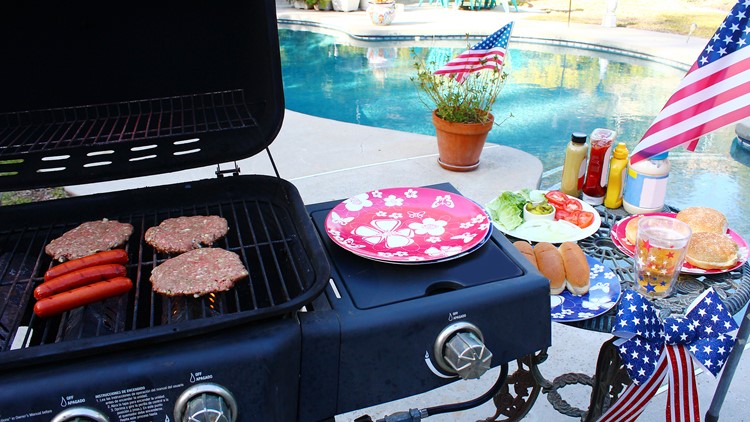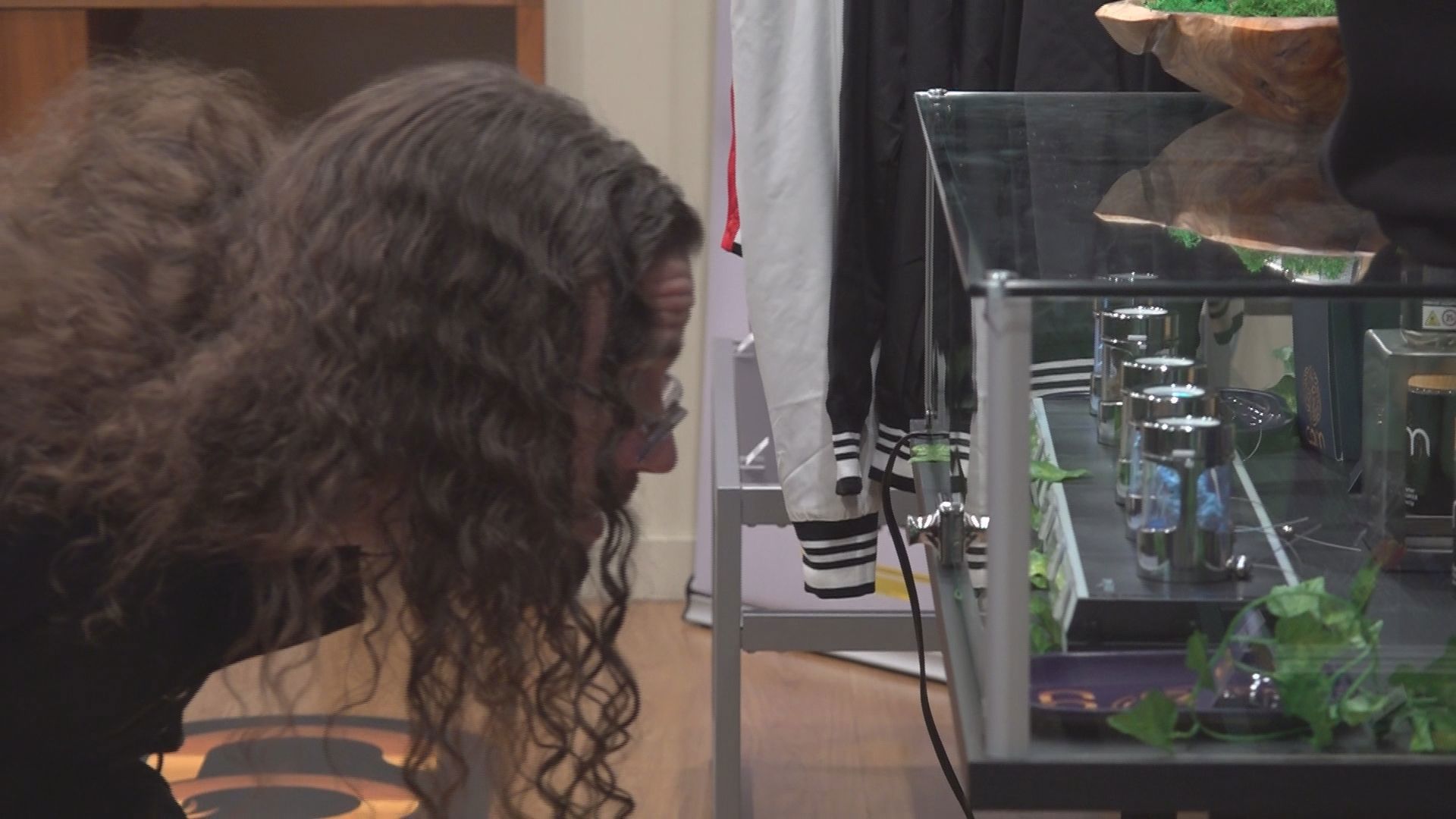Spring has finally hit all across the country, and that means one thing: the return of grilling season. While intrepid grillers have kept the coals lit all year long, most of us probably hung up our tongs for the last few months.
If you're just breaking out the grill this year, your grates may not be the only thing that are a bit rusty. With that in mind, here are 14 of the most common grilling mistakes—and how to avoid them—to get the best, most flavorful grilled food you've ever had.
1. Not cleaning your grill properly
Though this is especially true if your grill has been in storage, you need to properly clean your grill every time you use it. Those charred bits from last week's cookout aren't "flavor"—they're just gross. Need a great grill brush? This 18-inch brush from Alpha Grillers is one of our favorites.
2. Not pre-heating your grill
Look, we get it: you've got a hot grill, a rumbling tummy, and some uncooked food. But putting food on the grill before it's hot enough just means you're likely to burn the outside and/or undercook the inside. Grill it right, grill it once.
3. Using lighter fluid to start charcoal
Everyone loves fire, and nothing makes fire easier than lighter fluid—or as one of our dads troublingly refers to it, "boy scout water"—but lighter fluid can give your food an acrid taste. If you're cooking with charcoal, just use a chimney starter (we recommend this basic Weber one) and do it the right way.
4. Not positioning (or re-positioning) food correctly
Though grills seem simple enough, most grills give you a few different temperature zones based on where the burners/charcoal is located. Moving food around at the right time (especially from a high heat area to a low heat area) ensures food doesn't burn or dry out.
5. Flipping meat using a BBQ fork
Most grilled meat needs to be flipped at some point while cooking, but putting holes in it is never required. In almost all cases, a spatula (like this one) or tongs (like these) are better choices for the job, ensuring your meat gets evenly cooked without getting punctured.
6. Not using the vents to control heat
The vents on a charcoal grill are there for a reason: oxygen needs to come in the bottom to fuel the charcoal, and smoke and other gases need to escape so the fire won't smother (this venting also helps draw in oxygen).
If you never touch your vents, it's likely your grill isn't working as well as it should. If the vents seem like a complete mystery to you then leave the exhaust at least halfway open and just adjust the bottom until you get a feel for your grill.
7. Opening the lid way too much
"Is it done yet?"... "How about now?" We get it. You're hungry. But meat doesn't cook faster when you're staring at it. In fact, it'll cook a lot slower because the lid isn't trapping any of the heat. Leave the lid on. Trust the process.
8. Not using indirect heat
One of the most common mistakes people make while grilling: thinking only the open flames are actually cooking the meat.
In reality, flame-licked food can taste bad, and most things need at least some time awayfrom the direct heat in order to cook through evenly. If you're only cooking food with direct heat you're more likely to burn it, undercook it on the inside, or just dry it out.
9. Not grilling enough vegetables
Grilled vegetables are amazing, and if you only think about meat when it comes time to grill you're not thinking big enough. Even if you are planning on cooking cut-up vegetables, wrapping them in tin foil or using a grill pan (like this one) can let you get even more utility out of your grill.
We also like to chop up an onion, a bell pepper, and maybe some asparagus. Toss in oil, salt, pepper, garlic, rosemary, and a dash of balsamic vinegar. If you're feeling crazy, toss in some baby tomatoes. Use tin foil or a grill pan and roast over direct heat until it's just soft. It's a delicious side to any meat dish
10. Cooking kebobs with vegetables and meat on the same skewer
Kebobs are frequently advertised (and sometimes sold) as having big chunks of chicken, beef, and vegetables on them, but they don't cook well like that.
Cook your meat and vegetables properly and then put them on skewers—you'll be way happier with the results. Oh, and invest in some metal skewers so you're not eating charred wood with your meal.
11. Sticking to only burgers and dogs
Everyone loves the classics: burgers, dogs, sausage, steaks. But there is a world of other kinds of meat out there to enjoy. Don't be afraid to try something new—it might become your new favorite meal.
For starters? Don't just grill wings or thighs. Whole or spatchcocked chicken on the grill, cooked with indirect heat, is incredibly juicy and delicious. This recipe by Sandra Lee is our favorite. You can sub any citrus juice concentrate for pineapple if you can't find it.
12. Overcooking your meat
This is the big no-no of any grill. Overcooked meat can still be good, but it often lacks the depth of flavor you get with properly cooked meat.
Worse, it can be dried out, chewy, and difficult to eat. Get a proper meat thermometer—our top pick for best meat thermometer is the ThermoWorks ThermoPop—and make sure your food is cooked just enough.
Also, if you haven't had lamb cooked over a charcoal fire then you've really never had the best version of lamb. You don't need to get fancy. Just add some oil, salt and pepper, and chopped rosemary and garlic and you're off to the races.
13. Putting sauce on too early
It may seem counter-intuitive when we just finished saying how bad dried out meat is, but sauce should be the last thing you put on meat before it finishes up. Sauces can burn very easily and completely change an otherwise perfectly cooked piece of meat. Add it last—use a silicone brush like this one—and you'll be much happier.
14. Not letting your meat rest
Though the phrase "Hot off the grill" evokes all kinds of memories of summer cookouts, in practice you need to let meat rest after it's been cooked. According to Chef J. Kenji López-Alt at The Food Lab, this is because the muscle fibers in meat tense up while they're being cooked.
The hottest outside fibers tense up so much they push moisture to the middle of the food. Cut the meat too early and that moisture just dribbles out onto the plate. If you let the meat rest in a warm place, the fibers relax and that moisture will be more evenly distributed in your food—rather than on your plate. Proper resting can take 10 minute or more depending on what you're cooking, so plan ahead!



